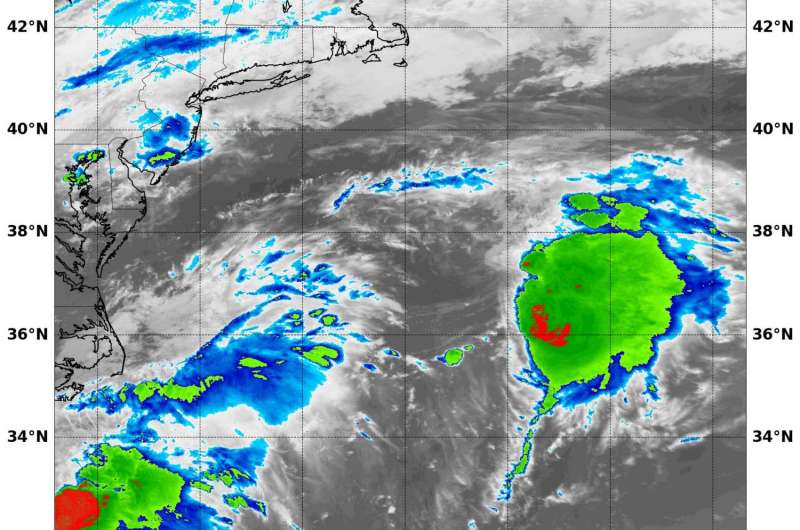NASA satellite sees dissipation of Tropical Depression 8

NASA's Terra satellite provided an infrared image of Tropical Depression 8 as it was dissipating about 400 miles east of Cape Hatteras, North Carolina.
The Moderate Resolution Imaging Spectroradiometer or MODIS instrument aboard NASA's Terra satellite provided an infrared look at Tropical Depression 8 (TD8) on Sept. 1 at 3 a.m. EDT (7:00 UTC). The MODIS image showed the coldest cloud top temperatures as cold as minus 70 degrees Fahrenheit (minus 56.6 degrees Celsius) in a very small area northeast of the center. Cloud top temperatures that cold indicate strong convection, or rapidly rising air that condenses into clouds and storms. NASA research has shown that storms with cloud tops that cold have the potential to drop heavy rainfall.
At 5 a.m. EDT (0900 UTC) that strong convection (rising air that condenses and forms the thunderstorms that make up a tropical cyclone) was displaced more than 100 nautical miles east of the location suspected to be the center of the tropical depression.
Maximum winds continue to be around 25 knots, associated with the remnants of the tropical cyclone. The remnants of TD8 were located near 38.2 degrees north latitude and 69.2 degrees west longitude. That's about 405 miles (655 km) east-northeast of Cape Hatteras, North Carolina and 1,005 miles (1,620 km) west-southwest of Cape Race, Newfoundland. The remnants are moving toward the northeast near 15 mph (24 kph) and maximum sustained winds are near 30 mph (45 kph) with higher gusts. The estimated minimum central pressure is 1010 millibars.
The National Hurricane Center noted that data from the Advanced Scatterometer (ASCAT) instrument that flies aboard the EUMETSAT Metop satellites showed that the system has opened up into a trough or an elongated area of low pressure. As a result, the system is no longer considered to be a tropical cyclone.
Provided by NASA's Goddard Space Flight Center





















